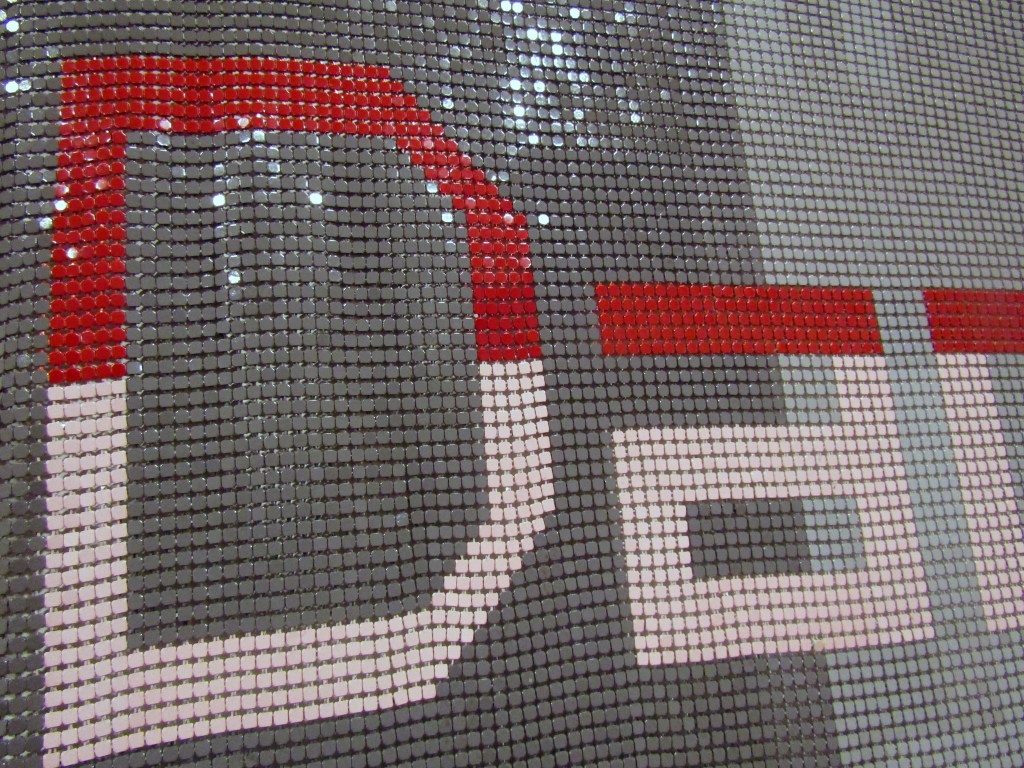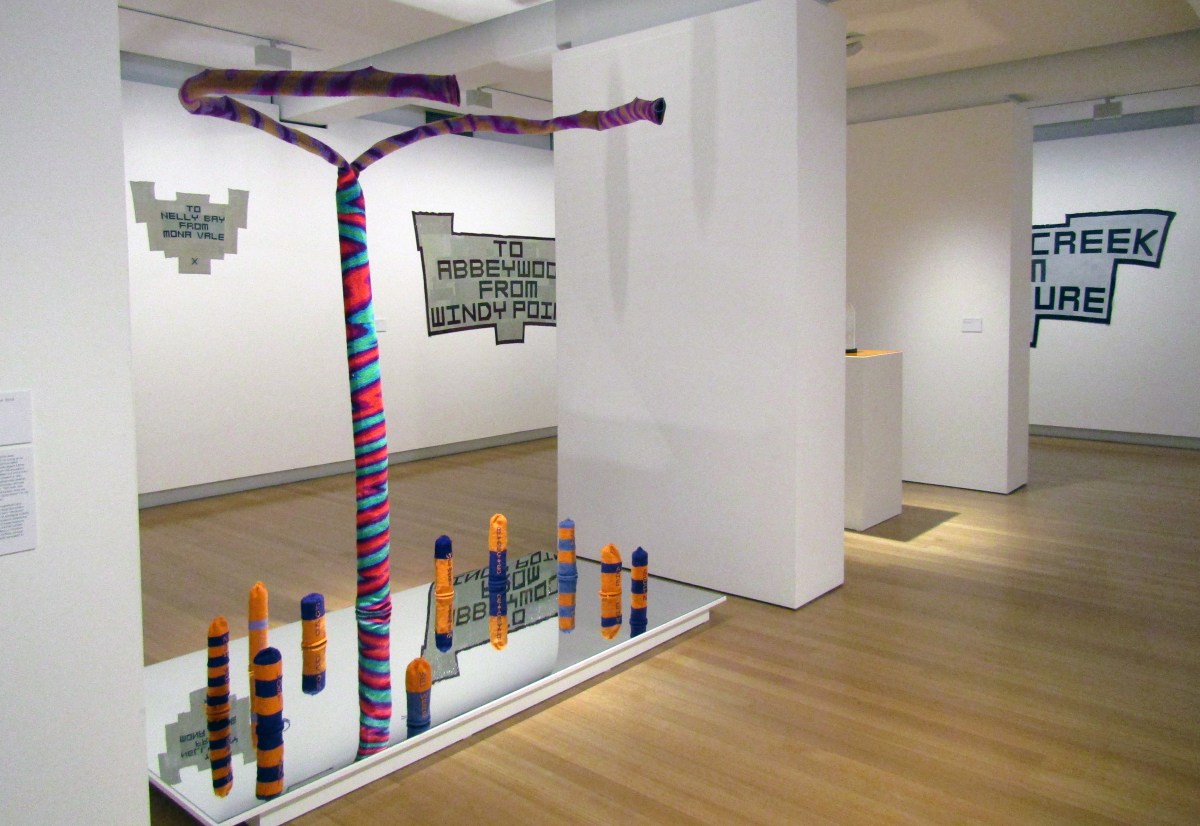The Queensland University of Technology (QUT) Art Museum is profiling one of its most colourful yet, up until recently, undecorated alumni: Troy-Anthony Baylis. The notion of an artist labouring in relative obscurity for decades, to suddenly be discovered, is a common myth. However, seldom do we come across first-hand accounts of this narrative. I Wanna Be Adorned is a heady experience, filled with artworks that are visually striking, intellectually stimulating and emotionally stirring.
However, the most astonishing aspect is the salience of this body of artwork Baylis has been beavering away at, largely unnoticed, for the past 17 years.
Upon entering the exhibition, audiences encounter The Modesty Set 1-3 (2013). Fit for a queen, each comprises what could be interpreted as a bralette and codpiece, woven from acrylic and jute. The latter reflects the Jawoyn heritage of the artist as he draws inspiration from the dilly bags woven by his female ancestors in the Northern Territory. However, its phallic form also suggests the artist is redressing the gender-specific division of men’s and women’s business crucial to many First Nations cultures of Australia. As a descendant of the Stolen Generation, Baylis further works to defy the Western notion of ‘modesty’ imposed by European settlers. From constraints – like the requirement to be clothed – he has constructed armour and flamboyance as part of the artist’s arsenal.
Whereas the musicality of the modesty sets may lie in their reference to drag for the queer artist, it is ostentatiously expressed through the titles of the exhibition and many of its artworks. Among them is the playful, yet perceivably sinister Tomorrow (2009). A series of acrylic dilly bag forms are suspended ominously like clefs in a musical staff, each embroidered with lyrics from the musical Annie. Although the film was released in 1977, Baylis has drawn on the aspirational words during what may constitute a low point in Indigenous and non-Indigenous relations in Australia. The objects were made amid the legal proceedings following the death in custody of Cameron Doomadgee on Palm Island. Bearing some resemblance to beanies, with a number suspended just above the height of viewers, the artworks beckon to be worn.
The Postcard (2010-) series could signpost a more positive movement, namely the reassignment of First Nations titles like K’Gari, Minjerribah and Uluru. The text emblazoned into rearticulated Glomesh and faux-mesh spells out place names, many of which were first appropriated by European settlers. For example, the shimmering Postcard (Darling to Sausage) (2021) makes reference to the Darling Downs in Queensland and Sausage Gully in Victoria. However, the latter may have been named in homage to the site of the Battle of Pozieres during World War I. The preparation process involved gutting and restitching. The words were painstakingly arranged using fragments of skin from coloured bags of the same type.
Baylis’ eye for irony is evident in many of the artworks; however, it may be most apparent in his choice to convey lengthy road trips between regional centres using material harvested from handbags.

A longstanding devotion to ‘slow art’ may account for Baylis’ seemingly unassuming absorption of many movements at their naissance within the Australian cultural landscape. The artist could have been described as a pioneer of Australian craftivism in the 2000s. He may have contributed a First Nations voice to the murmurs of an Australian post-genderism in the late 2010s. His practice, in its entirety, is quintessentially postcolonial.
Most pertinently, Baylis’ practice is a testament to the importance of intersectionality. Self-described as “Queer-Aboriginal”, Baylis explores these complex layers of marginalisation that lend his works both authenticity and authority. As such, the appeal of this exhibition is likely to transcend age, gender and cultural background. The artworks should be considered contemporary artefacts. While their titles provide a soundtrack for a generation of Australians reaching middle age, their materiality captures the epoch in which they were made.
I Wanna Be Adorned by Troy-Anthony Baylis is on view at QUT Art Museum until 1 October; free entry.
This article is published under the Amplify Collective, an initiative supported by The Walkley Foundation and made possible through funding from the Meta Australian News Fund.





